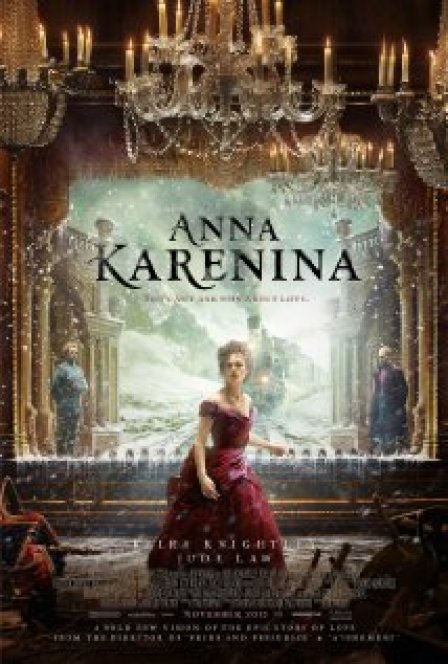Q: Just how many adaptations of Anna Karenina have there been?
A: More than two dozen for film and television alone, plus numerous plays, musicals, operas, ballets, and radio programs. And, for all I know, puppet shows, flip books, Rick Wakeman albums, and zombie mashups.
Q: Does the world really need another?
A: I’m not sure the world ever needed even one. Tolstoy’s novel is a bottomless source of pleasure in itself, the sort of fully realized work that tends to be diminished rather than enriched by reinterpretation for other media.
Q: So why do filmmakers keep returning to this well?
A: Because, incorrigible lot that they are, they will always be drawn to the grand passion of its tortured love triangle.
Q: This film is passionate, then?
A: Er, not exactly. It is, however, handsomely designed, and boasts some fine performances.
Q: Director Joe Wright has reunited with Keira Knightley, his leading lady from Pride & Prejudice and Atonement. How is she as Anna?
A: Not terrible. But the role demands greatness.
Q: Who would have been better?
A: Well, Downton Abbey’s Michelle Dockery turns up briefly, and one wonders what she might have done with the part.
Q: Knightley is playing a Russian again. Does she reprise her Natasha Fatale impression from A Dangerous Method?
A: Ha ha. No. Everyone uses a British accent, including Swedish up-and-comer Alicia Vikander, who plays Kitty.
Q: On the subject of Kitty, I love the way Tolstoy uses her tender romance with Levin as ballast against the destructive affair of Anna and Vronsky. How is that secondary story handled?
A: Wright and screenwriter Tom Stoppard give it a lot of attention — too much, perhaps, but maybe that’s not such a bad thing, since Vikander and Domhnall Gleeson are both so winning.
Q: How about the rest of the cast?
A: Aaron Taylor-Johnson is an aloof Vronsky and Matthew Macfadyen an amiable but overly clownish Oblonsky, while the great Kelly Macdonald is given little to do as Dolly. The best work is done by Olivia Williams as the cunning Countess Vronsky and, most prominently, Jude Law, who brings great depths of pain and dignity to the neglectful cuckold Karenin.
Q: Hm. Do I hear an Oscar nomination for Mr. Law?
A: I wouldn’t be surprised.
Q: Okay, you know I have to ask about this. I’ve heard this film has a very unusual, theatrical style. How does that work — is it like a photographed play?
A: No, it’s designed so that certain markers of a stage production — floorboards, curtains, backdrops, etc. — are sometimes visible. Often, characters will leave a room (i.e., set) by going off into the wings or up into the rafters. In addition, Wright sends orchestra musicians and unicyclists through the background of some scenes.
Q: Unicyclists?
A: Yes.
Q: Does all of that artifice heighten the theatricality of the film?
A: No. It serves as an expressly cinematic device, as in Richard Attenborough’s Oh! What a Lovely War.
Q: To what end?
A: I’m not sure, although an inkling is given when Wright suddenly opens the film up to exteriors and fully designed sets. It’s something like a reversal of the effect in The New World when, after reveling in the beauty and rhythms of nature for most of the film, Malick flings the viewer into the man-made splendor of the British royal court. But not as purposeful. The contrast of theatrical and realistic sets seems, at least on the evidence of a single viewing, mostly arbitrary.
Q: Is it distracting?
A: Not really. It eventually disappears altogether.
Q: So, will this film be remembered as a bold re-imagining of a timeworn classic?
A: Probably more as a puzzling, quixotic curiosity, albeit a lavishly beautiful one.
Q: One last question: Are there frequent, portentous shots of trains that will seem a trifle, ah, on-the-nose to anyone who knows how the story ends?
A: Yes.

